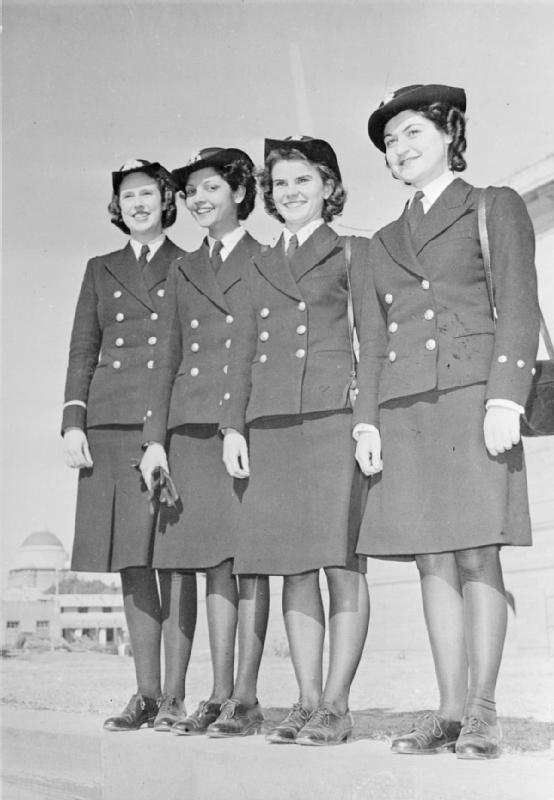Women's Auxiliary Corps (India) on:
[Wikipedia]
[Google]
[Amazon]
The Women's Auxiliary Corps (India) (WAC(I)) was created in March 1942, out of the
 * Moina Imam,
* Moina Imam,
Field Marshal Auchinleck inspects Women's Auxiliary Corps (India) 1947.jpg, Inspection by Field Marshal
Women's Auxiliary Service (Burma)
The Women's Auxiliary Service (Burma) (WAS(B)) also known as ''the Chinthe Women'' because of the mythological creature that formed their badge. The unit was formed on 16 January 1942 and disbanded in 1946. They were a 250 strong group of Britis ...
. By the end of the Second World War
World War II or the Second World War (1 September 1939 – 2 September 1945) was a World war, global conflict between two coalitions: the Allies of World War II, Allies and the Axis powers. World War II by country, Nearly all of the wo ...
, it had recruited 11,500 women.
Recruits had to be a minimum age of 18 years and their duties were clerical or domestic. In December 1942, the minimum age was reduced to 17 years. Volunteers could enlist on Local service or General service terms. Those on General service could be sent to serve anywhere in India.
Compared to over two million men, the corps of 11,500 women was small, but recruitment was always hampered by caste and communal inhibitions. Indian women at the time did not mix socially or at work with men and a large part of the corps was formed from the mixed-race Anglo–Indian community. The WAC(I) had an autonomous Air Wing, which served as the Indian counterpart of the WAAF: the women operated switchboards and similar duties at airfields and air headquarters (AHQ). In the earlier part of the war there was likewise a Naval Wing, but with the very localised environment of naval base and the very distinct ethos of the wartime naval services, British and Indian, this department was formally hived-off, in 1944, to become: the Women's Royal Indian Naval Service
The Women’s Royal Indian Naval Service (WRINS) was the naval section of the Women's Auxiliary Corps (India) (WAC(I)). It was established during the Second World War as a branch of the Royal Indian Navy.
Origin
The induction of women in the Roy ...
(WRINS), with its own uniform, similar to WRNS.
Personnel
 * Moina Imam,
* Moina Imam, chief petty officer
A chief petty officer (CPO) is a senior non-commissioned officer in many navies and coast guards, usually above petty officer.
By country
Australia
"Chief Petty Officer" is the second highest non-commissioned rank in the Royal Australian Navy ...
from Bihar
Bihar ( ) is a states and union territories of India, state in Eastern India. It is the list of states and union territories of India by population, second largest state by population, the List of states and union territories of India by are ...
, was among the first Indian girls to join the (WAC(I)) and became its poster girl.
* Kate Orchard, worked as a plotter
A plotter is a machine that produces vector graphics drawings. Plotters draw lines on paper using a pen, or in some applications, use a knife to cut a material like Polyvinyl chloride, vinyl or leather. In the latter case, they are sometimes k ...
.
Gallery
Auchinleck
Auchinleck ( ; ;
) is a village southea ...
Field Marshall Auchinleck inspects Women's Auxiliary Corps (India) 1946-1947.jpg, Inspection by Field Marshal Auchinleck
File:The Women Auxiliary Corps (India) - 01.jpg, Women Auxiliary Corps (India)
File:The Women Auxiliary Corps (India) - 02.jpg, Women Auxiliary Corps parade
File:Training to become officers of the Indian Women's Auxiliary Corps.jpg, Indian Women's Auxiliary Corps at ) is a village southea ...
Dagshai
Dagshai, also known as Daagh-e-Shahi, is one of the oldest cantonment towns in the Solan district, Solan district of Himachal Pradesh, India. It is situated on top of a 5,689-foot (1,734-m) high hillock that stands sphinx-like astride the Kalk ...
File:Private Begum Pasha Shah of the WAC (1) on duty in the Orderly Room of an RAF station in India, August 1943.jpg, Private Begum Pasha Shah
See also
*Women in World War II
Women took on many different roles during World War II, including as combatants and workers on the home front. The war involved global conflict on an unprecedented scale; the absolute urgency of mobilizing the entire population made the expans ...
* Women in the Indian Armed Forces
References
Military units and formations established in 1942 Women in India Women in the military by country {{India-mil-stub